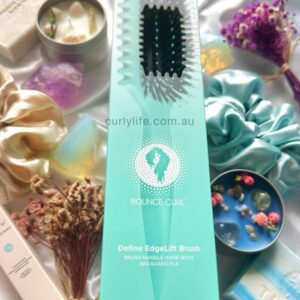Curl Basics #1: What Does ‘Transition’ Mean?
Photo: instagram.com/dinadenoire
This is a series for those who haven’t worn their hair natural in a long time or want to get serious about their curls. It can be daunting and confusing to go on this journey, but you don’t have to worry! I’ll be covering the basics of curls and help you kickstart your journey.
You’ll hear the word ‘transition’ thrown around a lot among curly hair brands, blogs and influencers. There are even products designed purely to help with transitioning! Since you’ll hear it a lot, it’s important you understand what this word means.
Definition
Transitioning refers to the time period where healing damage and restoring your natural curls takes place.
How long does transitioning take?
It’s different for everyone, but normally around 2-5 years. This depends on how much damage your hair has taken.
How long it has taken me
I have to give you some context before answering this. Since I was 12 years old, I had straightened my hair everyday (yes, you read that right). At 16 years old, I bleached it all to a very light shade of blonde (my hair is naturally darkest brown/black). I used very low-quality products on my hair since I was young. Despite straightening my hair daily, my curls still rejected it and would curl at the roots and tips. I was so angry at my hair for repaying me this way! So, I tried to cancel it out with insane amounts of the worst products you could imagine.
I even went through a phase where I would straighten my hair and then curl it immediately afterward. I tried to get the beachy-Hollywood-actress type of waves. Because it never worked, I would re-straighten it. So to sum it up: step 1 was to straighten, step 2 was to curl my hair with my straightener and step 3 was to straighten it again.
As you can imagine, my hair took a LOT of damage. I was so used to having damaged hair, that I actually thought my hair was healthy. The only thing I haven’t done is relax my hair. My mum stopped me because it was too expensive.
At 18 years old, I started my transition in August 2019. I definitely did not go cold-turkey and I eased into it slowly. By December 2019, I was properly following the core curly guidelines (no bleach, no heat, proper products). I still had a lot to learn, like wrapping my hair at night and how to properly style it. Despite this, I was properly following the essential guidelines and was on the right track toward healing.
Where I Am Now
Now it’s almost two years later and my hair is still damaged. Don’t get me wrong, it’s improved a lot and I absolutely love my hair. When I brush certain sections of my hair, it bounces back up (I only brush while wet). This is a sign of good health. I know I still have damage because my curls are very inconsistent. Also, some parts (like my bottom sections) look amazing, while other sections (like my top layers) look very raggedy.
No one I know truly knows or understands that my hair is still damaged. When I get complimented by other curly girls (who most of the time aren’t natural), I explain to them that my hair is still damaged and its going to look a lot more amazing in the future. I explain this because I want them to realise that even damaged curls can look beautiful.
This is the first part in my Curl Basics series. Over the next few weeks, I’ll be adding to it and guiding you through everything from the beginning. If you have any particular questions, contact me and I’ll help you out.
Part 2 of the series → Curl Basics #2: Is Transitioning for You?








